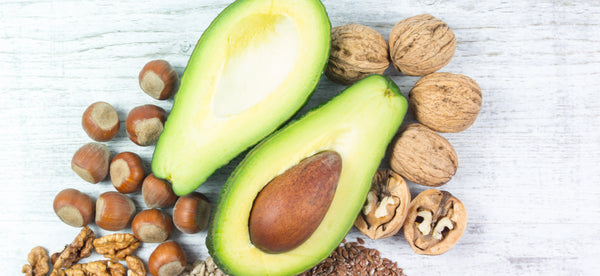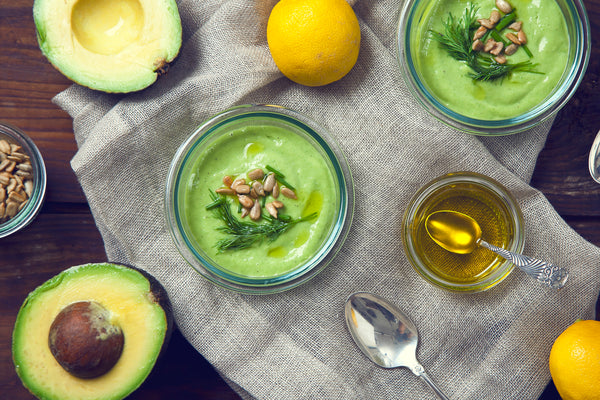


Reprinted with the permission of foodmatters.com/articles
Bread. There’s nothing more talked about when it comes to the controversy associated with its digestibility, pros and cons, or the right and wrong ways to make and source it. There is also nothing more delicious than that charred crust and airy, doughy center. No matter your stance, and regardless of sensitivities or allergies, bread making is not what it used to be. Often filled with highly-processed and chemical-laden flours, fillers, and even sugars, we’re dissecting what you really need to know to ensure a healthy and delicious loaf.
Before we dive in, our number one recommendation when it comes to purchasing bread (or any packaged good), is don’t be swayed by the labeling, advertising or packaging. Flip the product around and find the list of ingredients and nutrient labeling. Most commonly, ingredients will be listed by weight, with the largest quantities listed first. If sugar is listed first or second in order, you can be sure that the product has a pretty high sugar content before you even read the nutrient label.
Today, it’s more common and certainly easier to find food products that contain ingredients that go against our pure lifestyles than ones that meet our wholesome criteria. When it comes to flours, typically processed and bleached white wheat flour is used in baking. It’s cheaper for mass production, and has a long shelf life as the grain has been stripped of its nutrients and then fortified with vitamins to add nutrients back in. Companies try to trick consumers into thinking their bread is a wholesome product by using the wording “wheat flour”, however, this is simply standard flour.
Whole wheat flour, on the other hand, may be a more wholesome choice as it usually denotes that the product has not been bleached and often retains components of the entire grain – the germ, endosperm, and bran. The result may have as long a shelf life, but it is certainly more nutritious, containing more fiber, protein, healthy fats, and more nutrients in general.
Breads are often manufactured to sit on the shelf for far longer than they would in a bakery. They need to be able to resist molding, hold their shape, and maintain their flavor. For commercial breads, this often means adding preservatives, chemicals, fillers, flavorings, and coloring or bleaching to ensure freshness.
Azodicarbonamide, APA or ADC is a bleaching agent and known carcinogen often used in conjunction with potassium bromate which is used to create texture and volume. Potassium bromate is banned most countries except the U.S., Canada and Japan.
Sugar is often used to feed yeast during the rising process, but there should not be substantial sugar left over or added after the process. Dextrose, refined white sugars, or even corn syrup are common additions to commercial bread. Be on the lookout and avoid breads that have more than 4 grams of sugar per slice.
In addition to the naturally inherent fats from grains, additional oils may be added during the baking process, especially in gluten-free breads, that act as a binder and enhance texture or mouth feel. Avoid highly processed or hydrogenated fats such as canola or vegetable oil at all costs, as they are highly inflammatory and usually of GMO origin.
Salt is a common component in bread, used in the fermentation process as well as for flavor. Like many commercial food goods, manufacturers are heavy handed with this seasoning, sending sodium levels much higher than they should be per serving. While we love a sprinkle of Himalayan sea salt on our food, extremely high levels of sodium in processed foods can be harmful to your heart health in the long term. Look for breads that have approximately 150 mg of sodium per serving, and if possible, use natural, less processed sodium sources such as sea salt or Himalayan salt.
Typically, freeze-dried, quick-rise yeasts are used in commercial bread baking to get the same rise end result in far less time. This does not give the yeasts enough time to consume the sugars of the grain. It may be harder to find traditional sourdough breads that are fermented using wild, airborne yeast and bacteria, or allowed to ferment for long periods of time, but when you do they are a far superior product both in health and taste.
Traditionally, all that is needed to make bread is flour and water. When combined and exposed to the air, naturally occurring yeasts and bacteria feed on the carbohydrates in the flour, producing lactic acid in the process and creating a bubbling, airy and pliable texture while also transforming the nutrition.
Traditional sourdough breads are often fermented for periods longer than 24 hours. This timeframe allows for the yeasts to thoroughly digest the natural sugars in the flours. For this reason, traditional sourdough breads may be more easily digested by those who have trouble consuming bread products.
In addition, the process of fermentation reduces phytic acid content. Phytic acids are inherent in grains and are what keeps seeds from germinating. The issue is that they make grains harder to digest and inhibit mineral and nutrient absorption, as well as neutralize digestive enzymes. The process of creating sourdough helps to reduce these acids, make the nutrients more bioavailable.
Keep in mind that even though you may visit your local baker and buy a fresh-baked loaf vs a commercial made, store bought one, buying bread from a baker does not equate quality or mean they use traditional sourdough starters or longer ferments. Don’t be shy to ask what ingredients and practices are used. Bakers that do practice longer ferments or that have been using the same wild starter for years (they are highly prized), will often be proud of these processes and willing to share.
As the gluten-free industry grows and markets their goods as healthy alternatives, it is easy to be persuaded into thinking gluten-free equals wholesome and healthy. This is not always the case. While we recommend reducing your intake of gluten-containing products in general, a traditional sourdough made of whole-spelt, rye or even wheat can offer more nutritional benefits than typical, processed, gluten-free white bread. Gluten-free flours are often highly processed, stripped of nutrients, and made with GMO-containing grains; and they’re often much lower in protein and fiber for filling power. So “gluten-free” does not automatically equate with health. Often, because gluten-free grains lack the binding and volume producing qualities of gluten, artificial fillers, stabilizers, and excess sugars are used to created the expected effect.
But it’s not all bad for gluten-free breads! Gluten-free grains can be used to make traditional sourdough breads as well. They may be harder to find, but they are out there!
When it comes to grains, and wheat especially, opt for organic and GMO-free choices. This will ensure less pesticide residue and a healthier growing process.
Wholesome, gluten-free flours include sorghum, amaranth, millet, buckwheat, almond meal, and quinoa flour.
Sprouted grains, where the grain is allowed to germinate, similarly to fermentation reduces the phytate content, reduces the sugar of the grain, and creates a more digestible end product with more protein and less carbohydrates and gluten content. NUTRITION
NUTRITION
 RECIPES: VEGAN OTHERS
RECIPES: VEGAN OTHERS
 NUTRITION
NUTRITION
Sign up today to receive weekly Beauty, Nutrition and Lifestyle tips, exclusive offers, and 10% off your first purchase.
Our beauty and wellness brand offers support, services and products to help you become WELL WITHIN your skin, mind and body.
Sign up today and receive your special Friends and Family 20% off your first purchase, valid until May 31, 2017.
Stay Ever Well,
Lynne + Renee
Co-founders
Thank you for signing up today to receive weekly Beauty, Nutrition and Lifestyle tips, exclusive offers and your special Friends and Family 20% off your first purchase, valid until May 31, 2017.
Stay Ever Well,
Lynne + Renee
Sign up today to receive weekly Beauty, Nutrition and Lifestyle tips, exclusive offers, and 10% off your first purchase.
Leave a comment
Comments will be reviewed prior to posting.